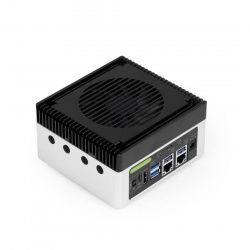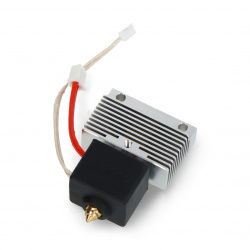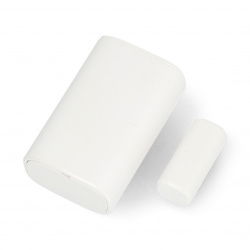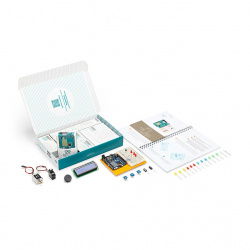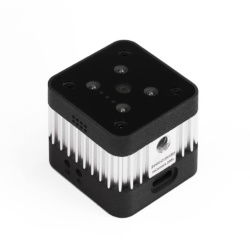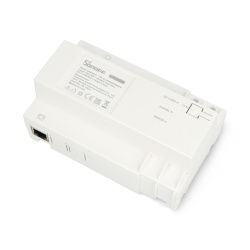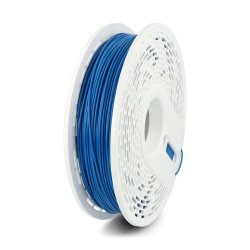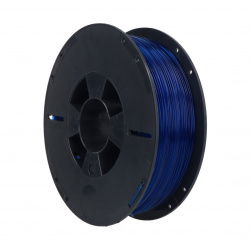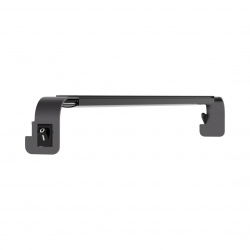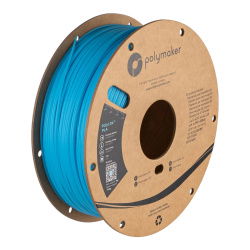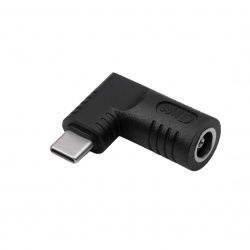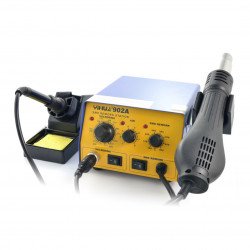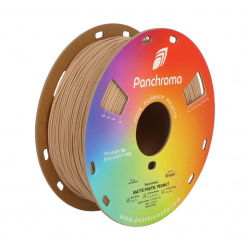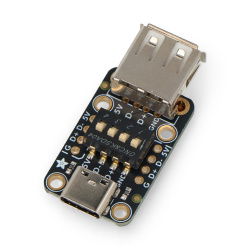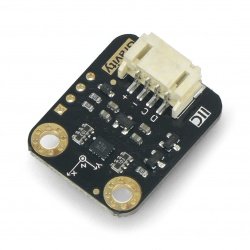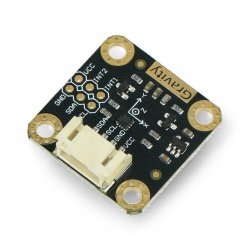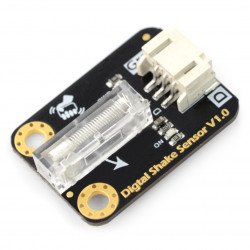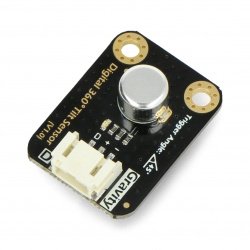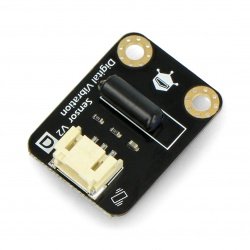- New
Gravity - accelerometers and gyroscopes
Gravity - BMI160 6DoF IMU - 3-axis accelerometer and gyroscope - DFRobot SEN0250
A 6-axis inertial motion sensor featuring the Bosch BMI160 MEMS chip. The module integrates a 16-bit 3-axis accelerometer and a 3-axis gyroscope . It is used to measure...Gravity - 3-axis magnetometer - BMM150 - I2C - DFRobot SEN0529
DFRobot three-axis magnetometer with Bosh BMM150 system based on FlipCore technology. The module allows you to measure the magnetic field in three perpendiculars in the...DFRobot Gravity SEN0224 - LIS2DH - 3-axis I2C accelerometer
Sensor for measuring acceleration in three axes in the range +/- 2 g , +-4 g, +g -8 or +-16 g . The module is powered with the voltage from 3.3 to 5 V, it has a voltage...DFRobot Gravity: Digital shake sensor
The shock sensor reacts to movement in a certain direction, so it can detect, for example, a hand movement. It is equipped with a vibration switch, spring type which serves to...Gravity - H3LIS200DL - 3-axis accelerometer - I2C - DFRobot SEN0412
Gravity module in the form of accelerometer , which allows to measure linear acceleration in three axes. It has an embedded H3LIS200DL chip and is powered by a voltage range...Gravity - LIS2DW12 - 3-axis accelerometer ±2g/±4g/±8g/±16g - I2C - DFRobot SEN0409
Gravity module in a form of 3-axis accelerometer , which allows to measure linear acceleration. It has a built-in LIS2DW12 chip (belonging to the popular LIS series) and...Gravity - Digital 360 Tilt Sensor for Arduino - DFRobot DFR0830
Gravity - Digital 360° Tilt Sensor is a tilt sensor manufactured by DFRobot. It has a metal ball that moves along an internal track - under the influence of gravity. Using...DFRobot Gravity - vibration sensor
A simple vibration sensor with digital output. It is supplied with the voltage from 3.3 V to 5 V, it works with Arduino modules.DFRobot Gravity - digital magnetic field sensor
Digital magnetic sensor can detect the magnetic object near it. The supply voltage is from 3.3 V to 5 V.See also
- Gravity - starter kits
- Gravity - base hats
- Gravity - actuators
- Gravity - gas & dust sensors
- Gravity - medical sensors
- Gravity - distance sensors
- Gravity - current sensors
- Gravity - temperature sensors
- Gravity - force sensors and limit switches
- Gravity - light and colour sensors
- Gravity - LED
- Gravity - encoders and potentiometers
- Gravity - converters
- Gravity - communication modules
- Gravity - sound modules
- Gravity - relays
- Gravity - buttons, keys and joysticks
- Gravity - cables
- Gravity - displays
Types of position, acceleration and speed sensors
When designing a mobile robot, a computer control interface, or an intriguing hand-controlled gadget, it's worth taking a moment to consider what type of sensor will work best for the application. For the simplest devices, which only need to detect the fact of vibration or tilt of the housing (without any measuring function, such as determining the exact orientation relative to the Earth's surface), it is best to use a contact sensor. An example of such solution are the DFR-04711 modules available in our offer - vibration sensors with digital output. Vibrations short-circuit a small contact inside the sensor housing - so the microcontroller can detect vibrations using an external interrupt or a hardware timer operating in the input pulse capture mode. Shock sensors (DFR-13294) and tilt sensors (DFR-04279), which are also compatible with any microcontroller (although they can also be used in analog circuits and devices based on classic digital circuits), work on a similar principle.
MEMS accelerometers and gyroscopes
Microelectromechanical system (MEMS) sensors have taken over the market for solutions designed to measure acceleration and rotational speed, gesture detection, detecting the fall of people or free-falling objects, spatial navigation of drones and mobile robots, and many others. Every modern mobile device has sensors such as the basic 3-axis MEMS accelerometer, which is used to detect acceleration, vibrations (e.g., steps), and gestures (in some applications). An example of such a chip can be the integrated 3-axis digital accelerometer with I2C interface - LIS2DH - which is the heart of the DFR-08831 module. While accelerometers respond to linear accelerations in three axes (X, Y and Z), gyroscopes allow to determine the speed components in these axes. Interestingly, the fusion of data from both types of sensors significantly increases the accuracy of determining kinematic parameters (acceleration and velocity) - a technique that becomes particularly important in flying machines and balancing robots.
Gravity Ecosystem - multi-parameter sensor sets for flight controllers (and more)
The Gravity sensors produced by DFRobot also include magnetic field sensors - in the case of the DFR-13155 module, in addition to a 3-axis magnetometer (compass), the user can also take advantage of a 3-axis accelerometer and a 3-axis gyroscope. There is even a BMP280 digital barometer with temperature measurement function. The combination of inertial data with high-resolution atmospheric pressure measurement (to determine the height above the ground) allows you to accurately track the position and all major flight parameters of drones and flying robots. A similar set of functionalities is offered by another model of the 10 DOF sensor from the DFRobot Gravity series with catalog designation DFR-15712. In this case, the role of inertial sensor is performed by BMX160, while the integrated BMP388 sensor is responsible for temperature and pressure measurements.






























































































































































































































































































































